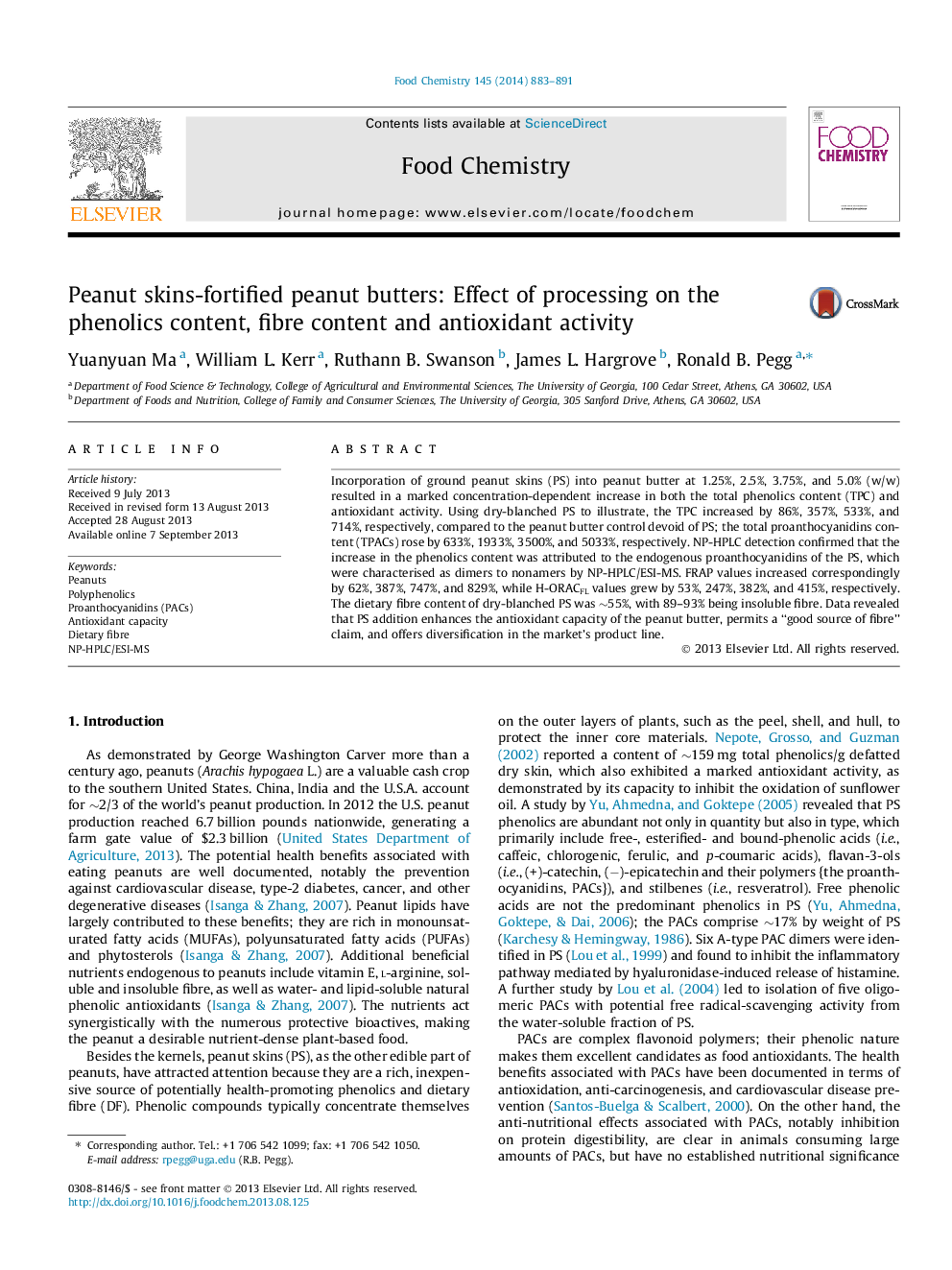| Article ID | Journal | Published Year | Pages | File Type |
|---|---|---|---|---|
| 7601150 | Food Chemistry | 2014 | 9 Pages |
Abstract
Incorporation of ground peanut skins (PS) into peanut butter at 1.25%, 2.5%, 3.75%, and 5.0% (w/w) resulted in a marked concentration-dependent increase in both the total phenolics content (TPC) and antioxidant activity. Using dry-blanched PS to illustrate, the TPC increased by 86%, 357%, 533%, and 714%, respectively, compared to the peanut butter control devoid of PS; the total proanthocyanidins content (TPACs) rose by 633%, 1933%, 3500%, and 5033%, respectively. NP-HPLC detection confirmed that the increase in the phenolics content was attributed to the endogenous proanthocyanidins of the PS, which were characterised as dimers to nonamers by NP-HPLC/ESI-MS. FRAP values increased correspondingly by 62%, 387%, 747%, and 829%, while H-ORACFL values grew by 53%, 247%, 382%, and 415%, respectively. The dietary fibre content of dry-blanched PS was â¼55%, with 89-93% being insoluble fibre. Data revealed that PS addition enhances the antioxidant capacity of the peanut butter, permits a “good source of fibre” claim, and offers diversification in the market's product line.
Related Topics
Physical Sciences and Engineering
Chemistry
Analytical Chemistry
Authors
Yuanyuan Ma, William L. Kerr, Ruthann B. Swanson, James L. Hargrove, Ronald B. Pegg,
